


APSMUSEUM is honored to announce its inauguration on November 11, 2020, with the presentation of the exhibition "Urban Ensemble," organized by Art Pioneer Studio and L+MALL at Lujiazui Center.
Dedicated to trailblazing a new field that will bring together contemporary art, architecture, design, and fashion, this inaugural exhibition - organized by the founder of Art Pioneer Studio, Robin Wong, and curated by artist Xu Zhen - invites the participation of 15 acclaimed artists from China and oversea, including, Anish Kapoor, Ding Yi, Mona Hatoum, He An, James Turrell, Li Hanwei, Lu Xinghua, Michelangelo Pistoletto, Qiu Anxiong, Shi Yong, Wang Jiangwei, Wang Ziquan, XU ZHEN®, Yang Zhenzhong, and Zhan Wang.
The city binds the works of the past, the contemporary, and the future. It's more a system that operates the lives of the urbanites, but a collective work of many generations; it's not a written book, but one that's being re-read and re-written. The new urban dwellers who have just arrived are inventing new features and forms of the city and transforming it into their works. Every city is a work of art created by generations of people living there, while the new city has also been "on exhibit" in each generation's works.
Contemporary art has afforded the city a compound structure to encompass time, space, bodies, and desires. It can transform a product of space into an artwork about space, transforming urban dwellers from product consumers to creators of their own artworks. Contemporary art supports new urbanites:
· To realize one’s experience in the city over a period of time into a work of art;
· To present one’s artwork in one’s city;
· To transform the city into one’s artwork;
· To present the city in one’s artwork.
Contemporary art integrates the spaces of everyday living, architecture, design, the fashion of a city into the "gesamtkunstwerk” of art and discovers new capacities for surviving the Anthropocenic city of a new festival of commonality.
In an era where new works are being created, APSMUSEUM aims to unite artists, architects, designers, and all talents in the creative disciplines to stimulate new desires and wisdom in the city and show the public other possible tracks of life beyond work and leisure. We devote to adopting a hybrid and integral approach for urban practice, exploring spatial issues, and opening up new possibilities for urban spaces. In doing so, we aim to foster a pollinating economy that would bring together contemporary art, architecture, design, and fashion beyond the art institutions and social practice and engendering the ethic of stems in the new urban society, where its components, intrigue, share, contribute, empower and reciprocate with one another.
As the anthropologist and sociologist, Georges Bataille has put it, an art space is the lungs of the metropolis, and the masses that poured in are the blood that stimulates the city. By amplifying, fermenting, cataloging works of art and their relationships with their viewers, an art space in the city introduces fresh oxygen and provides a profound grammar for urban space planning and the development for organizing urban life.
CURATOR & ARTISTS

△ Xu Zhen
Artist, Curator, MadeIn Company Founder
Xu Zhen was born in 1977, and lives and works in Shanghai. Xu Zhen has been considered as an iconic figure in Chinese contemporary art. In 2004, Xu won the prize for ‘Best Artist’ at the China Contemporary Art Award. His practice covers various media such as installations, video, painting and performance, etc.
Xu Zhen has exhibited internationally, at museums and biennales, such as, Venice Biennale (2001, 2005), The Museum of Modern Art (New York, 2004), Mori Art Museum (Tokyo, 2005), MoMA PS1 (New York, 2006), Tate Liverpool (2007), Hayward Gallery (London, 2012), Lyon Biennial (2013), Armory Show (New York, 2014), Long Museum (Shanghai 2015), Al Riwaq Art Center (Qatar, 2016), Sydney Biennial (2016), Guggenheim Museum (New York, 2017), Sharjah Biennial (2019), Museum of Contemporary Art (Los Angeles, 2019), National Gallery of Australia (Canberra, 2020), among others. Aside from being an artist, Xu Zhen is also a curator. He co-curated together with other artists major exhibitions in Shanghai and was one of the initiators of Art-Ba-Ba (www.art-ba-ba.com), a leading online forum for discussion and critique of contemporary art in Shanghai, in 2006. In 2009, Xu Zhen established ‘MadeIn Company’, a contemporary art creation corporate, focused on the production of creativity, and devoted to the research of contemporary culture’s infinite possibilities. In 2013, MadeIn Company launched XU ZHEN® which is committed to art creation and cutting-edge culture development. In 2014, MadeIn Company established MadeIn Gallery and in November 2016 launched the first “Xu Zhen Store” in Shanghai.
XU ZHEN®, founded by artist Xu Zhen in 2013, is the flagship art brand of MadeIn Company. Born in 1977, Xu Zhen is a leading Chinese artist and curator, and the founder of MadeIn Company. XU ZHEN® is committed to art creation and cutting-edge culture development. XU ZHEN® is one such initiative to offer spiritual aspirations and life experiences of the finest quality through the appreciation and collection of artworks and events produced by the brand.

△ Anish Kapoor
Anish Kapoor is one of the most influential sculptors of his generation. Perhaps most famous for public sculptures that are both adventures in form and feats of engineering, Kapoor manoeuvres between vastly different scales, across numerous series of work. Immense PVC skins, stretched or deflated; concave or convex mirrors whose reflections attract and swallow the viewer; recesses carved in stone and pigmented so as to disappear: these voids and protrusions summon up deep-felt metaphysical polarities of presence and absence, concealment and revelation. Forms turn themselves inside out, womb-like, and materials are not painted but impregnated with colour, as if to negate the idea of an outer surface, inviting the viewer to the inner reaches of the imagination. Kapoor’s geometric forms from the early 1980s, for example, rise up from the floor and appear to be made of pure pigment, while the viscous, blood-red wax sculptures from the last ten years – kinetic and self-generating – ravage their own surfaces and explode the quiet of the gallery environment. There are resonances with mythologies of the ancient world – Indian, Egyptian, Greek and Roman – and with modern times.

△ Ding Yi
Ding Yi (b. 1962) was born and currently resides in Shanghai. Ding Yi works primarily with "+" and its variant "x" as formal visual signals, above and against the political and social allegories typical of painting in China. He chose this sign in the second half of the 80s as a synonym of structure, rationality and of a pictorial expressiveness that reflects the essence of things. The practice of Ding Yi encompasses painting, sculpture, spatial installation and architecture.
Ding Yi has exhibited extensively at various institutions and galleries, among many others, Solomon R. Guggenheim Museum (New York/Bilbao); Daimler Contemporary (Berlin); Centre Pompidou (Paris); Guangdong Museum of Art (Guangzhou); Long Museum (Shanghai); Minsheng Art Museum (Shanghai); ShanghART Gallery (Shanghai/Beijing/Singapore); Timothy Taylor Gallery (London/New York); Galerie Karsten Greve (Paris/St.Moritz/Cologne).

△ Mona Hatoum
Mona Hatoum was born into a Palestinian family in Beirut, Lebanon in 1952 and has lived and worked in London since 1975. Solo exhibitions include Hiroshima City Museum of Contemporary Art, Japan (2017); Menil Collection, Houston, Texas, touring to Pulitzer Arts Foundation, St Louis, MO (2017-18); Centre Georges Pompidou, Paris, touring to Tate Modern, London and Kiasma Museum of Contemporary Art, Helsinki (2015-16); Arab Museum of Modern Art, Doha (2014); Kunstmuseum St. Gallen, Switzerland (2013); Fundació Joan Miró, Barcelona (2012); Beirut Art Centre (2010); Fondazione Querini Stampalia, Venice (2009); Ullens Center for Contemporary Art, Beijing (2009); Museum of Contemporary Art Australia, Sydney (2005); Hamburger Kunsthalle, Hamburg, touring to Magasin III, Stockholm and Kunstmuseum Bonn, Germany (all 2004); Tate Britain, London (2000); Castello di Rivoli, Turin (1999); Museum of Contemporary Art Chicago, touring to New Museum, New York (1997).
Hatoum has participated in numerous group exhibitions including Documenta 14, Kassel, Germany and Athens (both 2017); 6th Marrakesh Biennale (2016); 5th Moscow Biennale; Guggenheim Bilbao, Spain (both 2011); 15th Biennale of Sydney (2006); 51st Venice Biennale (2005); Documenta 11, Kassel, Germany (2002); The Turner Prize, Tate Britain, London (1995); 46th Venice Biennale (1995); and 4th Istanbul Biennial (1995).
Among other awards, Hatoum has received the Praemium Imperiale (2019), the 10th Hiroshima Art Prize (2017) and the Joan Miró Prize (2011).

△ He An
Born in Wuhan in 1970, He An now lives and works in Beijing.
He An is one of China’s foremost conceptual artists with a practice that includes installation, sculpture, photography and performance. His works largely reflect the physical and psychological emotional shock brought about by dramatic changes in Chinese cities. Combining light-boxes, billboards, neon lights and other materials, He An turns urban symbols into a new artistic language.
He An’s works have already been exhibited in galleries and institutions including Tate Liverpool, Australia Centre for Contemporary Art, London’s Saatchi Gallery, Carnegie Museum of Art, Ullens Center for Contemporary Art (UCCA) etc.

△ James Turrell
James Turrell (b. 1943, Los Angeles, California), as a leading figure of the "Light and Space" movement, has long devoted himself to the exploration of the art of perception, with a special focus on the materiality of light. Influenced by the notion of pure feeling in pictorial art, Turrell’s earliest work focused on the dialectic between constructing light and painting with light, building on the sensorial experience of space, color, and perception; these interactions became the foundation for Turrell’s oeuvre. Presented as site-specific pieces, the recent work of Turrell’s in the exhibition feature a diamond shape with a frosted glass surface animated by an array of technically advanced LED lights, which are mounted to walls and generated by computer programming. The light changes are subtle and hypnotic, one color morphing into the next seamlessly. The program runs on a loop that is imperceptible to the viewer, prompting a transcendental experience. This wall-cavity filled with color advances the lineage of abstract art, particularly calling to mind Mark Rothko’s Color Field paintings which for Turrell “brought color out of darkness.” In implicating the viewer in the temporal experience of color within the physical and perceptual experience, Turrell turns light into a powerful substance.
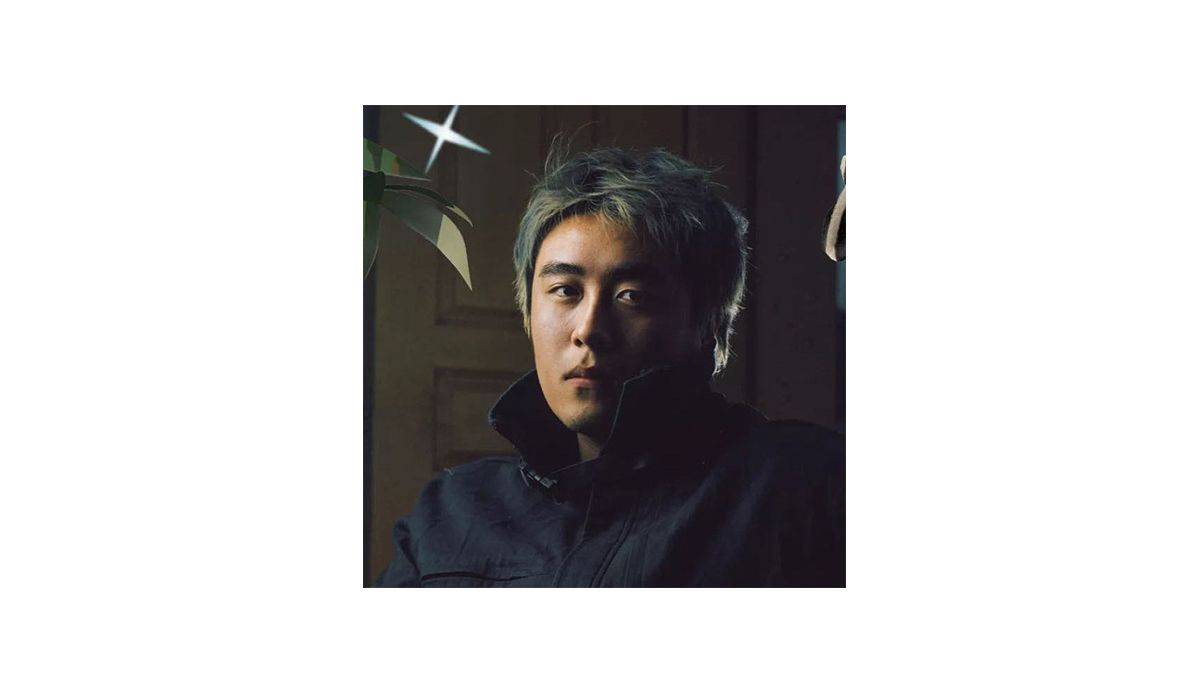
△ Li Hanwei
Li Hanwei, born in Xuzhou, Jiangsu province in 1994, graduated from the Shanghai Institute of Visual Arts in 2018, and currently lives and works in Shanghai. Li’s practice adopts the forms of commercial advertisements and films as metaphors. Exploring various communication methods, the artist uses CG images to establish a worldview in the fictional world where counterfeit of the real world and science fiction coexist, as a way to present the intersection between contemporary culture forms and individual identities.
Li Hanwei has participated to exhibitions such as: “Sino-Wharf: from Chinatown to Red Internationalism”, OCAT, Shenzhen, China, 2020; “Recommendations of Institutions”, Boxes Art Space, Shenzhen, China, 2020; “Wild Metropolis”, Powerlong Museum, Shanghai, China, 2019; “Advent: Inventing Landscape, Producing the Earth”, Qianshao Contemporary Art Center, Shanghai, China, 2019;“Extreme Mix”, Guangzhou Airport Biennale, Guangzhou, China, 2019; “The Variable and The Generating”, MadeIn Gallery, Shanghai, 2019; “Liquid Health”, Goethe Open Space, Shanghai, 2019; “Hunting Cycle”, MadeIn Park, Shanghai, 2018; “Shanghai Hot the Beheaded Six”, Yell Space, Shanghai, 2018; Boundary, SIVA, Shanghai, China;BABEL7, Babelsberger Strasse 52, Berlin, 2018; "Diversity", École nationale supérieure d'art de Nice – Villa Arson, Nice, 2016. Li Hanwei nominated for “Dior Photography and Visual Arts Award for Young Talents” in 2020. Li Hanwei also co-operates the online contemporary art space Slime Engine with Liu Shuzhen, Fang Yang and Shan Liang since 2017. Li Hanwei has been involved in the conception and production of several exhibitions for Slime Engine.
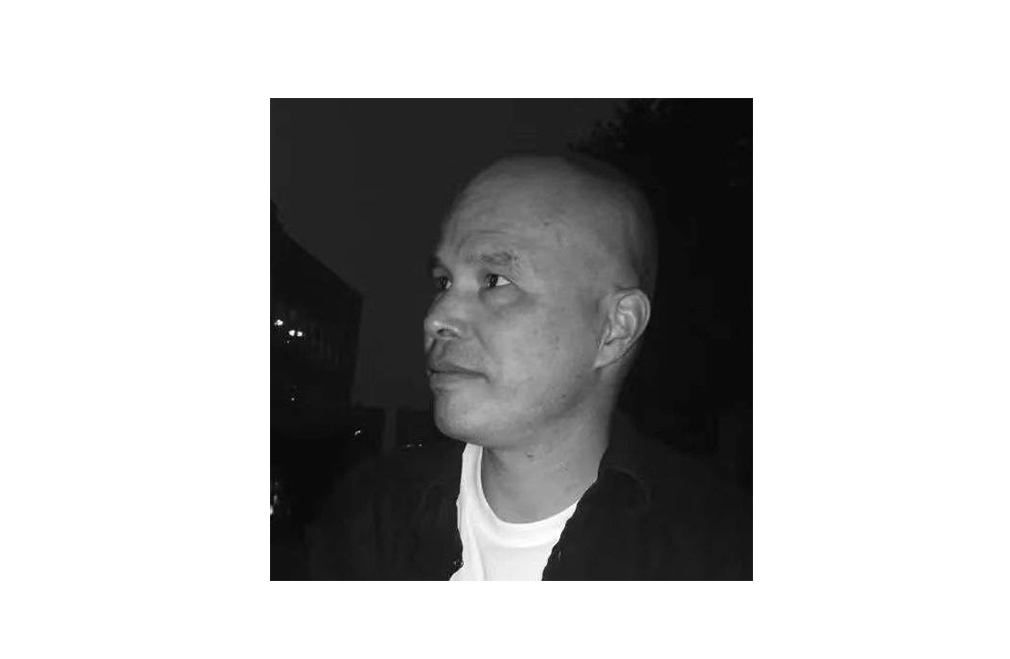
△ Lu Xinghua
Lu Xinghua, philosopher, professor of School of Humanities, Tongji University; specialised on philosophy of art and contemporary French philosophy.

△ Michelangelo Pistoletto
Michelangelo Pistoletto was born in Biella in 1933. He began to exhibit his work in 1955 and had his first solo show in 1960 with Galleria Galatea in Turin. His early work is characterized by an inquiry into self-portraiture. In the two year period from 1961-1962, the first Mirror Paintings were made, which incorporate the viewer and real time into the work directly, opening up perspective, and reversing Renaissance perspective that had been closed off by the twentieth century avant-garde. These works quickly brought Pistoletto international acclaim, leading to individual shows in important galleries and museums in Europe and the United States in the sixties. The Mirror Paintings provided the foundation of his subsequent artistic output and theoretical exploration. In 1965 and 1966, he produced a set of works entitled Minus Objects, considered fundamental to the birth of Arte Povera, an art movement for which Pistoletto was an animating force and key protagonist. In 1967, he began working outside traditional exhibition spaces, with the first instances of the“creative collaboration” he developed over the following decades by bringing together artists from different disciplines and diverse sectors of society. From 1975-1976, he presented a cycle of twelve consecutive exhibitions, “LeStanze”, at the Stein Gallery in Turin. This was the first of a series of complex, year-long works known as “time continents”, others include White Year (1989) and Happy Turtle (1992). In 1978, in a show in Turin, Pistoletto defined two main directions for his future artistic production:“Division and Multiplication of the Mirror” and “Art Takes On Religion”. In the early eighties, he made a series of sculptures in rigid polyurethane translated into marble for his solo show in 1984 at Forte di Belvedere in Florence. From 1985 to 1989, he created the series of “dark” volumes called Art of Squalor. During the nineties, with Project Art and his creations in Biella of Cittadellarte Fondazione Pistoletto and the University of Ideas, he brought art into active relation with diverse spheres of society with the aim of inspiring and producing responsible social change. In 2003, he won the Venice Biennale’s Golden Lion for Lifelong Achievement. In 2004, the University of Turin awarded him an honorary degree in Political Science. On that occasion, the artist announced the most recent phase of his work, Third Paradise. In 2007, in Jerusalem, he received the Wolf Foundation Prize in the Arts, “for his constantly inventive career as an artist, educator and activist whose restless intelligence has created prescient forms of art that contribute to fresh understanding of the world.” In 2010, he wrote the essay “The Third Paradise”, published in Italian, English, French and German. In 2011, he was the artistic director of “Evento 2011 – L'art pour uneré-évolution urbaine” in Bordeaux. In 2012, he started promoting the Rebirth-day, the first worldwide day of rebirth, celebrated every year on December 21st with initiatives taking place all over the world. In 2013, the Louvre in Paris hosted his personal exhibition “Michelangelo Pistoletto, année un – le paradis sur terre”. The same year, he received the Praemium Imperiale for painting, in Tokyo. In 2014, the symbol of the Third Paradise was installed in the hall of the headquarters of the Council of the European Union in Bruxelles for the duration of the Italian Presidency of the European Council. In May 2015, he received an honorary degree from the Universidad de las Artes of Havana in Cuba. In the same year, he realized a work of epic scale entitled Rebirth, situated in the park of the Palaisdes Nations in Geneva, headquarters of the UN. In 2016, he exhibited his works in Havana, Cuba, at the Museo Nacional de Bellas Artes, with a great retrospective exhibition which encompassed his entire artistic journey, from the paintings of the 1960s to the latest works on the Third Paradise and the Cuban Mirror Paintings, executed the previous year. In 2017, the artist participated in an auxiliary event of the 57th Venice Biennial with the exhibition “One and One Makes Three” at the San Giorgio Maggiore Abbey complex in Venice.
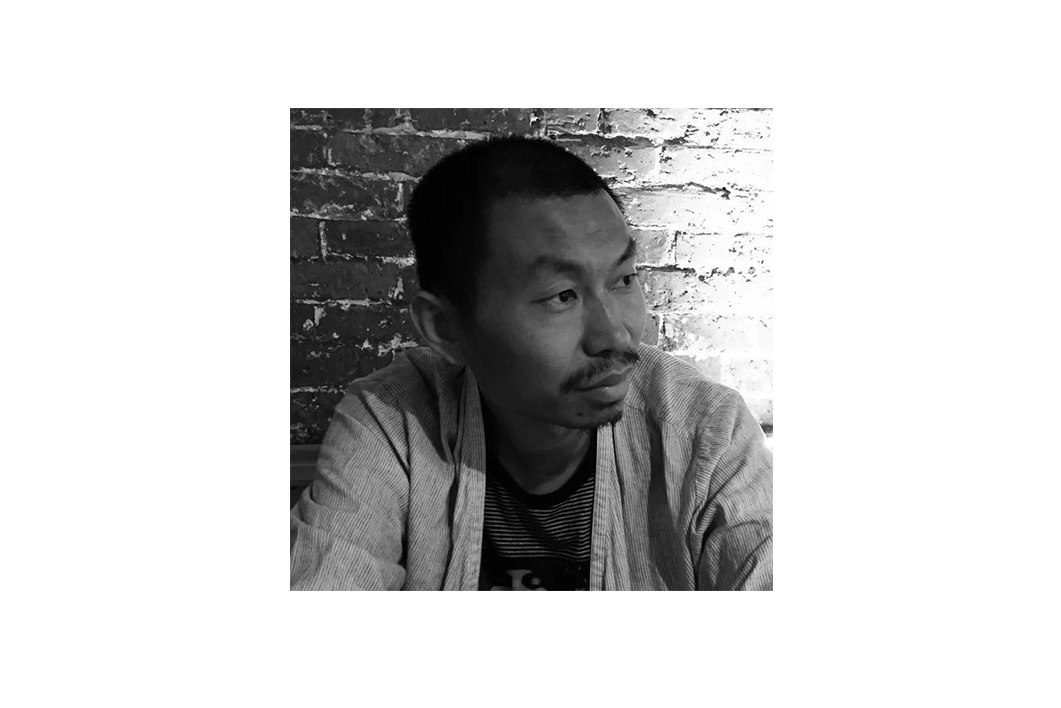
△ Qiu Anxiong
Qiu Anxiong was born in 1972 in Sichuan province. He graduated from Sichuan Academy of Fine Arts in 1994. In 2003 he graduated from the University Kassel's College of Art in Germany after six years of studying both contemporary international art and traditional Chinese culture. Now he is teaching in East China Normal University. His works employs different kinds of mediums including animation, painting, installation and video, etc. Representative works are animation film New Classic of Mountains and Seas, Temptation of the Land, Minguo Landscape, video installation Staring into Amnesia. He founded “Museum of Unkown” in 2007, which is an active power in the ecological construction of contemporary arts in recent years.
Qiu Anxiong’s recent work consists largely of paintings, animations, and video installations. In the 2006 piece The New Classic of Mountains and Seas, for example, Qiu employs multitudes of ink drawings and links them together in an animated form. The title itself refers to the ancient Chinese mythology Classic of the Mountains and Seas. Besides investigating the interaction between ancient and modern Chinese culture, this work and others like it have a dreamlike quality: the clearly delineated images framed by unbelievable narratives faithfully depict the absurdity of the world around us. This link to the everyday further enhances the political value of the work, which engages in a damning criticism of environmental degradation, social breakdown, and massive urbanization. Unlike younger artists, Qiu Anxiong does not indulge in the personal pleasures of the everyday, but rather takes the undifferentiated mass of history as his raw material.
His work has been collected by The Museum of Modern Art, Victoria and Albert Museum, Spencer Museum of Art, the University of Kansas, Kunst Halle Bern, Guangdong Museum of Art, Guy & Myriam Ullens Foundation, Uli Sigg, Haudenschild Collection.
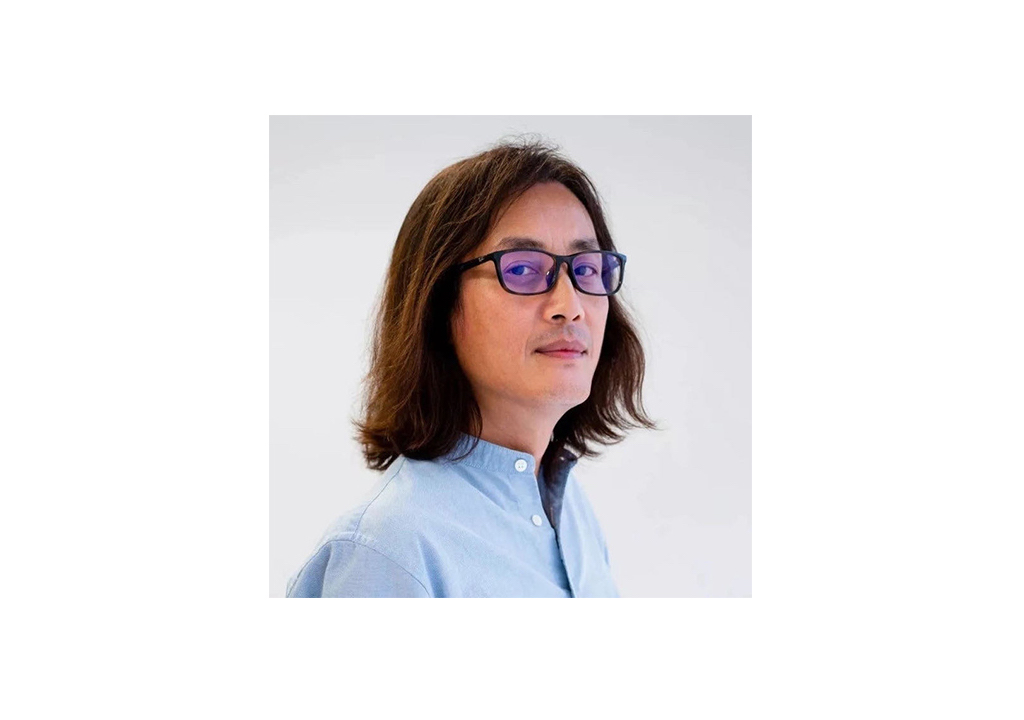
△ Shi Yong
Shi Yong is a representative figure of contemporary Chinese artists who first started working with installation and video media. Since 1993, his works have been widely exhibited both in China and abroad. His artworks cover a wide range of mediums including performance, video, and installation. Shi Yong’s earliest artistic practices focused on revealing the subtlety of our reality and the inherent tension of the "system". At the end of the 1990s, Shi began focusing on the idea of Shanghai’s transformations under the Chinese economic reform, which contributed to a discussion of globalization and consumerism. Since 2006, with the piece "Sorry, There will be no Documenta in 2007", he turned his attention to the art world that he's been involved in, pondering how to provide a more rational perspective through his creative works. Shi Yong’s 2015 solo exhibition "Let All Potential Be Internally Resolved Using Beautiful Form" continues his art practice, disclosing his intention to expand the reflection and practice of “control” under the seemingly “abstract” future.
Shi Yong was born in Shanghai in 1963. He graduated from the Fine Arts Department of Shanghai Light Industrial School. He now resides and works in Shanghai. Shi Yong has been exhibited widely since the early 1990s. Recent shows include: A Fairy Tale in Red Times, National Gallery of Victoria, Melbourn, Australia (2019); Nothing is Impossible (Solo Exhibition), Yellspace, Shanghai; A ( ) Bird be Released from the Top of a Certain Tower (Solo Exhibition), Boxes Art Museum, Foshan; This is Shanghai, Chinese Contemporary Art, Liverpool, UK (2018); Shi Yong: Under the Rule, ShanghART, Shanghai; Floating World, Bahrain (2017); Trace of Existence, UCCA, Beijing; The Crocodile in the Pond, Luzern (2016); Let All Potential be Internally Resolved using Beautiful Form (Solo Exhibition), MadeIn Gallery; Ural Industrial Biennial of Contemporary Art, Ekaterinburg; Essential Matters - Moving Images from China, Borusan Contemporary Perili Kosk, Istanbul, (2015); Hans van Dijk: 5000 Names, Ullens Center for Contemporary Art, Beijing; Witte de With Center for Contemporary Art, Rotterdam, the Netherlands; Off-Site Programme, Silent Film, Ikon Gallery, Birmingham (2014); Big Draft, Kunstmuseum Bern, Bern (2010); Think carefully, where have you been yesterday?, (Solo Exhibition) BizART, Shanghai (2007); Alllooksame/Tutttuguale? Fondazione Sandretto Re Rebaudengo, Turin (2006); Second Guangzhou Triennale, Guangsong Museum of Art, Guangdong; Felicidad Indecible (Unspeakable Happiness), Museo Tamayo Arte Contemporáneo, Mexico City; Follow Me!, Mori Art Museum, Tokyo (2005); The Heaven, The World (Solo Exhibition), ShanghART Gallery, Shanghai (2004); XXV Biennale de Sao Paulo, Sao Paulo; Money and Value, The Last Taboo, Switzerland; 4th Shanghai Biennale, Shanghai Art Museum, Shanghai (2002); Unpacking Europe, Museum Boijmans Van Beuningen, Rotterdam; Living in Time, National galerie im Hamburger Bahnhof Museum fuer Gegenwartskunst, Berlin (2001); The Third Asia-Pacific Triennial of Contemporary Art, Queensland Art Gallery, Brisbane (1999); Art for Sale, Shanghai; Cities on the Move (1-6): Exhibition of Asian Art, Secession, Vienna; CAPC, Musee d' Art Contemporain, Bordeaux; PS1 Contemporary Art Center, New York; Louisiana Museum of Modern Art, Copenhagen; Hayward Gallery, London; Kiasma; Museum of Contemporary Art, Helsinki (1997- 1999); Two Attitudes Toward Identity 93, Gallery of Shanghai Huashan Art Vocational School, Shanghai (1993) etc.

△ Wang Jianwei
Wang Jianwei has been interested in the pre-established functions of a space since Production (1997); this piece was the primary work of his first attempts at video-recorded art. Production was a selective documentative record of the intra-group relationships which take place in public spaces across all areas of Sichuan Province, inquiring into the private space of conversation within a public space of the teahouse. The video recording Life Elsewhere (1998-1999) similarly possessed documentative qualities in its attempt to take social issues and phenomena and situate them in an expanded domain of observation. Wang Jianwei resists utilizing solely one means by which to express the integrity of relationships and thoughts, this can be seen a key aspect of his visual language. In Screen (2000), Wang Jianwei for the first time used theatrical performance to act out the scene of the painting The Banquet of Han Xizai by the Five Dynasties’ painter Gu Hong, and in the later work Flying Bird is Motionless (2005) once again worked using theatre and rehearsal to elucidate his personal interpretation on time and the contemporary. Human Quality (2008), uses an extremely tense 32-minute recording to reconstruct communal life during China’s Cultural Revolution, a conceptual project which linked together all experiences of history, utopias, symbols and influences utilizing video, photographs, and sculptural installations amongst other media as a means of questioning and experimentation. “Rehearsal” for Wang Jianwei is the focal avenue through which he consults reality and history, and though many of Wang Jianwei’s works are founded in the experience of Chinese society, they are much more focused on a globalised and universal dimension, such as in his video and performance work Welcome to the Desert of the Real (2010).
In 2011 Wang Jianwei held a solo-exhibition “Yellow Signal” at the Ullens Center for Contemporary Art and in 2013 held a solo-exhibition at Long March Space titled “……..” 2014-2015 he held a solo-exhibition at the Guggenheim Museum in New York “Time Temple” followed by the 2015 “Dirty Substance” at Long March Space. No matter whether installation or paintings, both progressively take form through unknown active forms, just as the medium of rehearsal, with the dialogue and contradictions amongst works in diverse media themselves can be seen as the launch of a rehearsal.

△ Wang Ziquan
Wang Ziquan, born in Shenyang, Liaoning in 1993, currently lives and works between Hangzhou and Shanghai. He graduated from the Central Academy of Fine Arts with a B.A. degree in sculpture in 2017 and from the Royal College of Art with an M.A. degree in 2019. Wang’s practice is rooted in his unique observation and understanding of the Internet and the virtual world, exploring the threshold values between virtuality and reality, and using 3D software to imitate the absurdity in the physical world. By using narrative computer images, he copies and pastes between virtual and real spaces.
Recent exhibitions including: “Art Nova 100”, Guardian Art Center, Beijing, China, 2019; “Fragmentation”, The Coningsby Gallery, London, United Kingdom, 2019; “Material Statement”, Dyson Gallery, Royal College of Art, London, United Kingdom, 2019 and etc.; Wang Ziquan was shortlisted for the Ashurst Emerging Artist Prize in 2020.
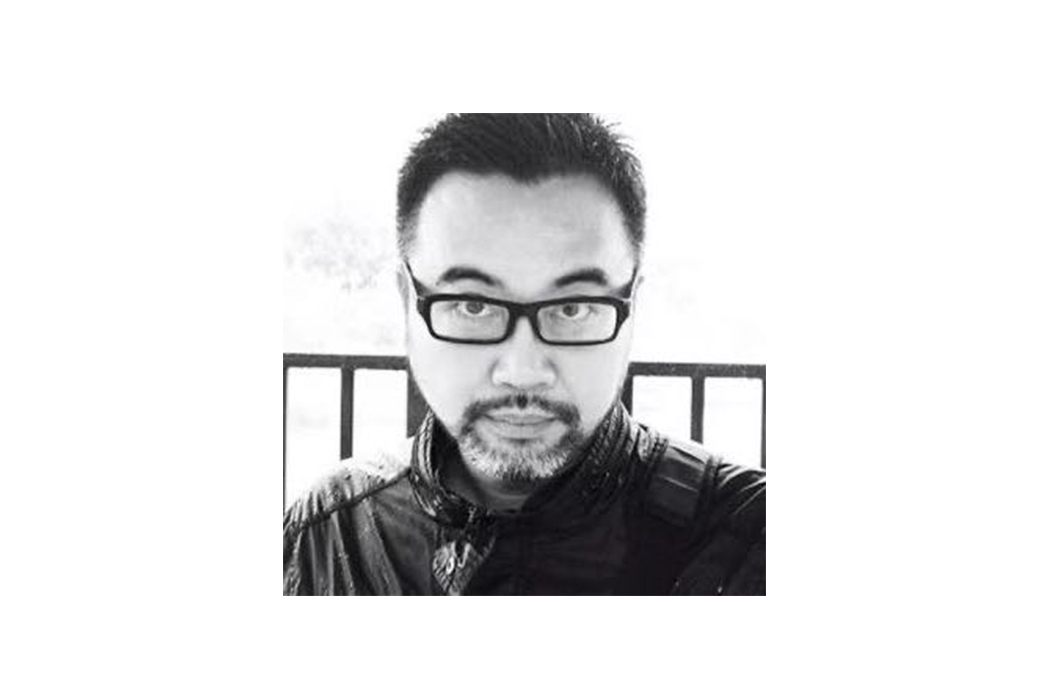
△ Yang Zhenzhong
Yang Zhenzhong was born in 1968 in Hangzhou, Zhejiang Province, and is currently based in Shanghai. As a practicing artist, Yang works primarily in the field of conceptual art with media that span from video, photography and installation to painting and sculpture. For decades, he is an active member of the international contemporary art scene and has showcased twice in the Venice Biennale (2003 and 2007). As a curator, he has collaborated with artists in Shanghai since the late 1990s and planned and initiated exhibitions including “Art For Sale”, “Dial 62761232: Express Art Exhibition” “Hipic”, and dozens of other important contemporary art shows and projects. YANG’s creations have always been centring on the issue of life and death and highlighting the multitude of contradictions and disorders in the society with a cynical attitude on one hand. On the other hand, he translates and recycles the people, objects and landscapes in everyday urban life and political space.
Selected solo exhibitions include: Surveillance and Panorama, Tang Contemporary Art, Beijing (2018); Eternal Return | Вечное возвращение, Moscow Manege Museum and Exhibition Association, Russia (2014); Trespassing, YANG Zhenzhong Solo Exhibition, OCT Contemporary Art Terminal, Shanghai (2013); Don’t Move, Yang Zhengzhong Solo Exhibition, ShanghART, Beijing (2011); YANG ZHENZHONG, Ikon Gallery, Birmingham, U.K.(2006); Light As Fuck!, BizArt, Shanghai (2002). Selected group exhibitions include: Art and China after 1989: Theater of the World, Solomon R. Guggenheim Museum, New York, U.S.A.(2017); Our Bright Future: Cybernetics Fantasy, Nam June Paik Art Center, Yongin-si, Korea (2017); Avant-Garde China: Twenty Years of Chinese Contemporary Art , The National Art Center, Tokyo (2008); Global Cities, Turbine Hall, Tate Modern, London, U.K. (2007) etc. The artist’s works have previously exhibited in numerous prominent exhibitions including Venice Biennale (2003, 2007), Shanghai Biennale (2002, 2016), Guangzhou Biennial (2002, 2005, 2012), Asia Pacific Triennale of Contemporary Art (2006), Lyon Biennale (2013) and so forth. His works can also be found in collection of significant public and private institutes such as MoMA New York, Guggenheim Museum, Ikon Gallery (U.K.), Fukuoka Asian Art Museum, Musée National d’Art Moderne and the UBS Collection.
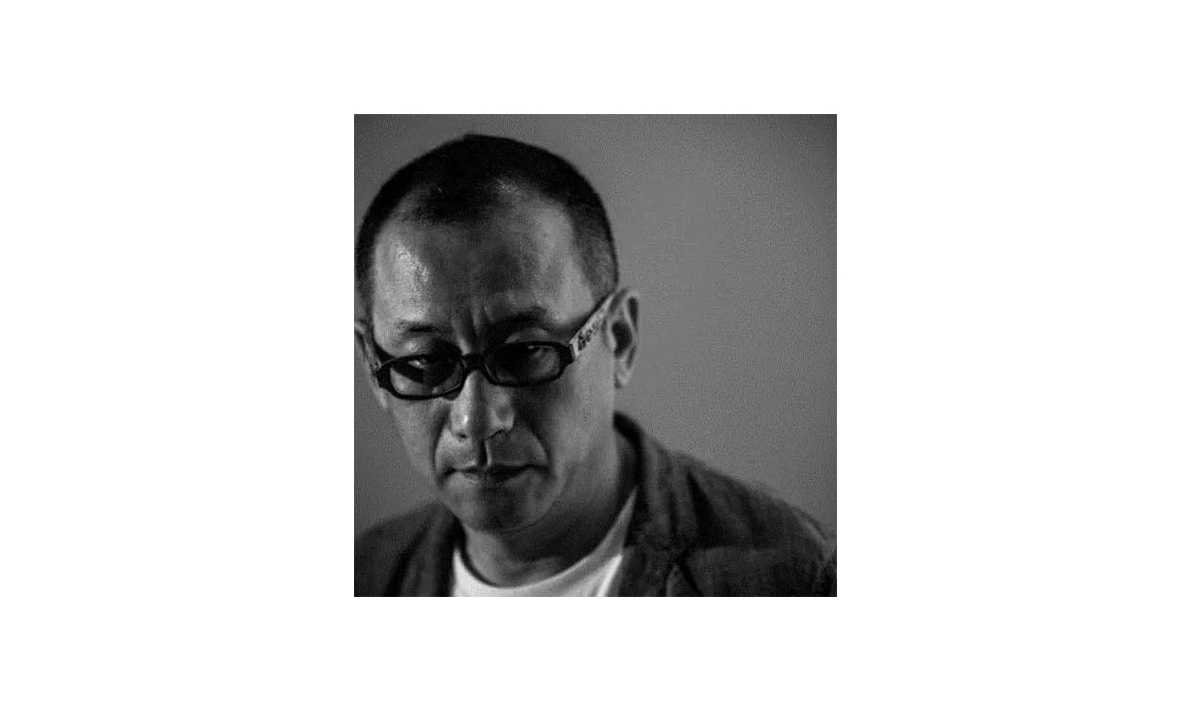
△ Zhan Wang
Zhan Wang was born in 1962 in Beijing, China. In 1996 he graduated from the sculpture department of the Central Academy of Fine Arts (CAFA) and he currently lives and works in Beijing where he teaches sculpture at CAFA. His art uses simple materials to formulate complex assemblages and issues. The experimentation in his art can be compared to a mind game, seeking a balance between amusement, temperament and sensation, bringing viewers surprises and revelations but never clear answers. The “Mao Suit” series was first shown in 1994; the “Artificial Rock” (Jiashanshi) series was produced in 1995; the “My Universe” series was produced in 2010; the “Forms in Flux” series was first shown in 2017; and the “Sensing” series was produced in 2019.

APSMUSEUM is a non-profit art space founded by Art Pioneer Studio and its founder, Ms. Robin Wong. With focuses on contemporary art, architecture, design, fashion, and other creative fields, the APSMUSEUM aims to discover, build, and integrate these areas of interest into a “space” of possibilities. The APSMUSEUM attempts to extend diverse public cultural spaces that bring together art, architecture, and design, a venue of cultural consumption of art and fashion, a psychological space that addresses man and social culture. APSMUSEUM is located in the L+Mall of Lujiazui, Shanghai. The renowned Italian design firm, Stefano Boeri Achitetti, executes its interior design consisting of APSPACE for exhibition, APSTORE for art and design shop, and APSALON for meetings. APSMUSEUM aims to create an unconventional exhibition space that brings art and culture to a vibrant retail concept.

L+Mall is located at the heart of Lujiazui, Shanghai, neighboring Shanghai Center, and Shanghai World Financial Center. Its more than 140,000 square meters of construction are divided into ten floors of retail space above ground and one underground. Situated at the "Golden Tip", L+Mall has become the new hub of Shanghai's financial center. Designed by the world's top architecture firm SOM (Skidmore, Owings & Merrill LLP), Benoy's international award-winning architecture firm has provided commercial space planning, interior design, and logo design for this sizeable mid-range and upscale shopping mall in the heart of Shanghai's financial district.
In 2019, L+Mall introduced the flagship store of Galeries Lafayette, which features nearly 600 brands from the world's major luxury brands and boutiques. It integrates diverse experiences such as dining, leisure and entertainment, crossover experiences, and art spaces.